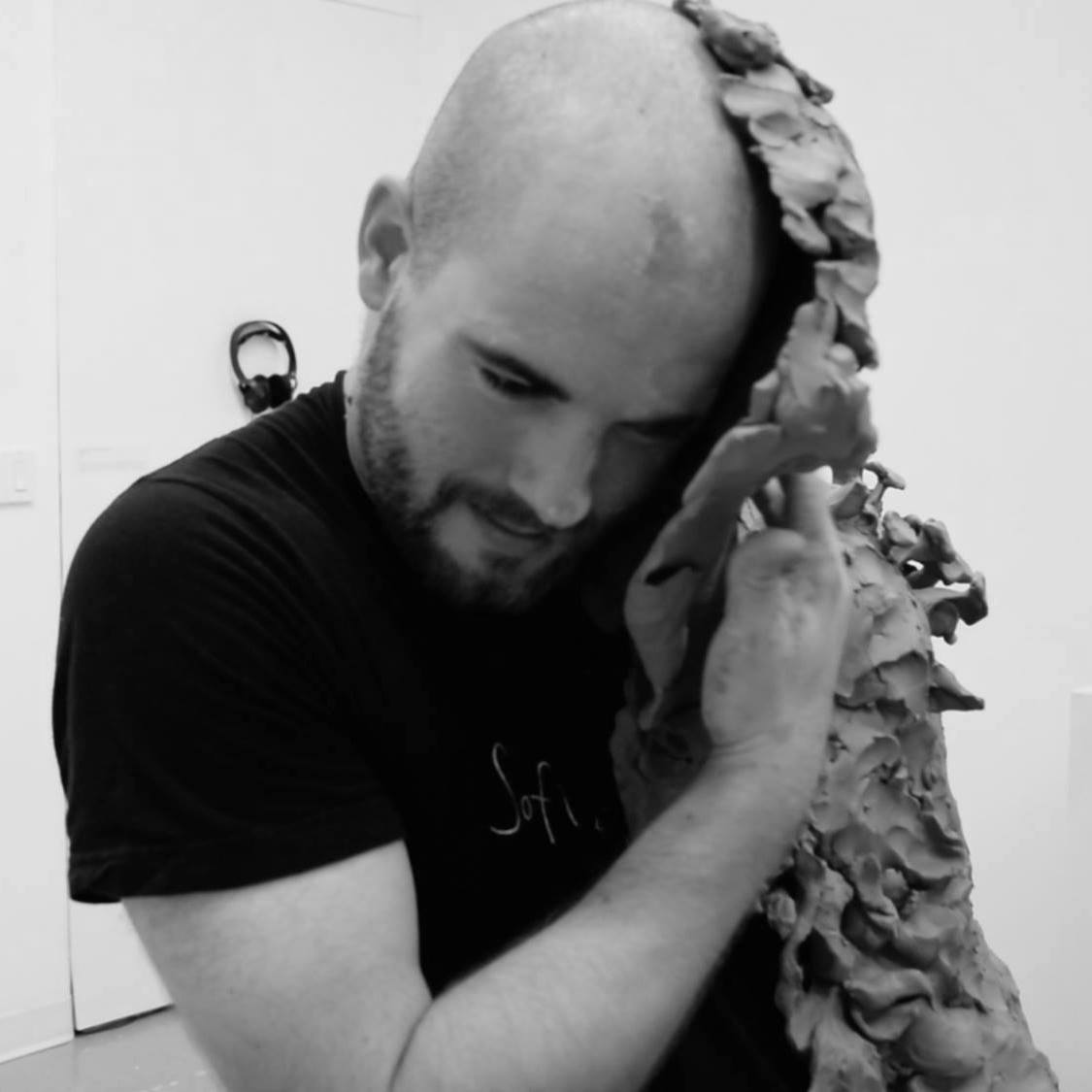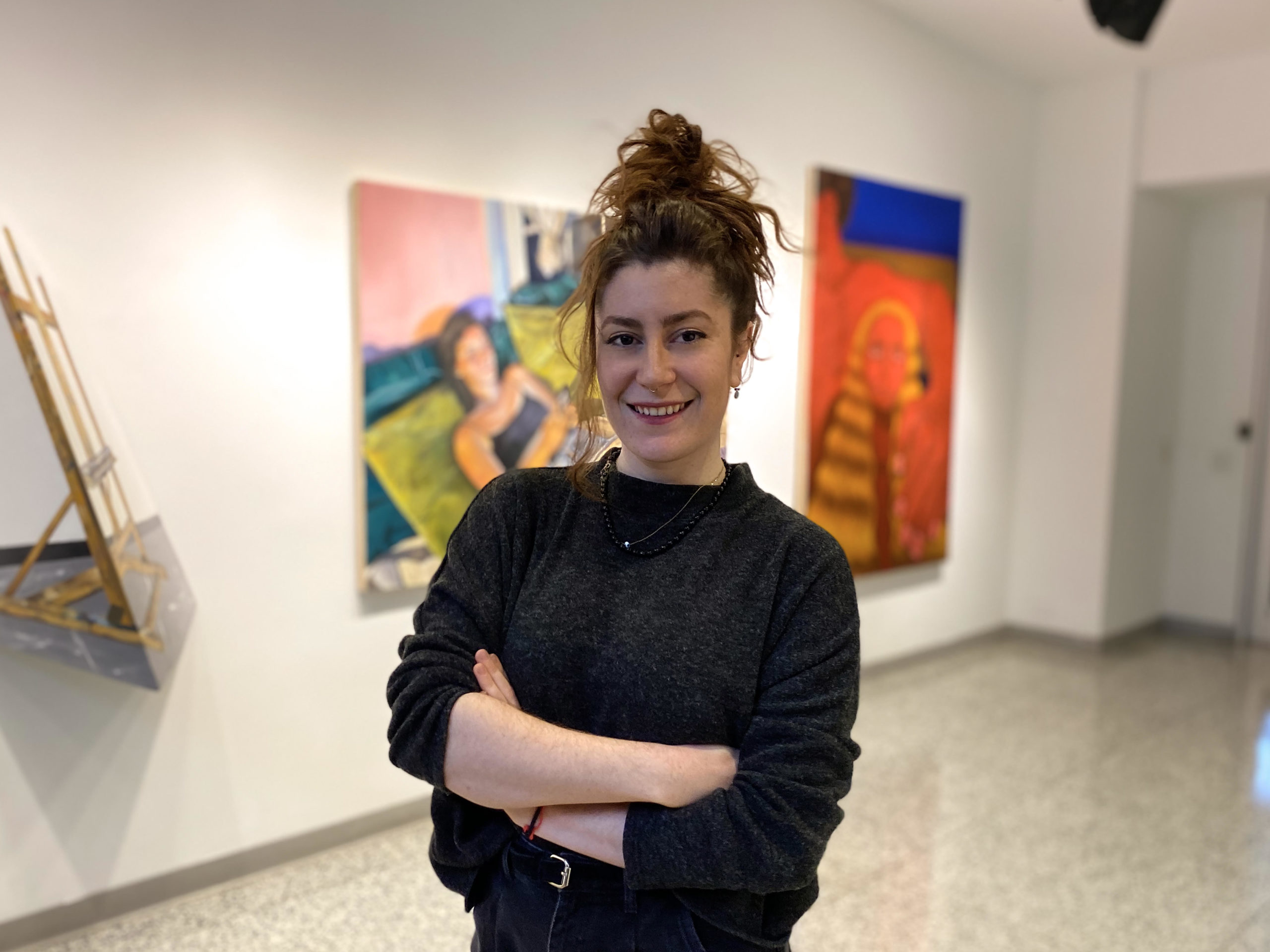One on One: Sera Boeno, Open Call for the Units of a Dispersed Monument in the Future (2020)
Our new “One on One” series presents timely encounters between ARTMargins Online editors and contemporary artists, focused on one specific recent work. In this (first) installment, Raino Isto talks with sculptor and installation artist Sera Boeno about her work Open Call for the Units of a Dispersed Monument in the Future (2020). The work is currently part of the online exhibition not (yet) futura free, organized by STABLE Arts in Washington, DC, curated by Nathalie von Veh.
Raino Isto: How did monuments become such a principal aspect of your practice?
Sera Boeno: I was born and raised in Istanbul, an ancient city marked by monuments from all eras. Some have now been transformed into tourist attractions and historical landmarks, while others remain active as propaganda. I have seen monuments built, taken down, or transformed in response to changes in the political system and dominant views in the country. Living in a city like this you inadvertently perform a cross-cultural/temporal study of monuments, just by interacting with public space.
I think about monuments in terms of concentric circles. Closest to the center, for me, are the inherent characteristics of monuments that relate to the state by dictating remembrance as a hegemonic practice, or that become a stand-in for patriarchy, often on a straightforward visual level (which I find amusing). Beyond this central core are the transformations and displacements of monuments that reflect shifting power structures. Finally, the outermost circle constitutes alternative monuments: objects or practices that can be considered monumental, but utilize non-traditional media or text, and counter-monumental practices that disrupt the monument itself.

Sera Boeno, Open Call for Units of a Dispersed Monument in the Future, 2020.
RI: How did the project Open Call for the Units of a Dispersed Monument in the Future begin for you?
SB: For most of 2019, I had been petitioning for a US O-1B Visa (Individuals with Extraordinary Ability or Achievement in the Arts/Motion Pictures/Television Industry, aka the “artist visa”). The specific type that I was applying for would allow me to be self-employed and work for multiple employers. But to have that freedom I had to outline not only my accomplishments, honors, awards and submit recommendations from industry leaders but also a compile prospectus of my positions/gigs as an artist for the next 3 years in the form of offer letters (which is quite hard for an artist). Of course, because the people who were judging my worthiness as an artist to the U.S. were not art experts but immigration officers, I had justify why each and every accomplishment, future job, or recommendation writer was “extraordinary” via legal arguments, statistics, sales, salaries, visitor numbers, and press circulation numbers.
The document amounted to 2,135 pages, 1-sided, in color, that I had to hand-annotate every time my name or my project was mentioned. This was one of the most dehumanizing things I have ever done—and I am operating from a fairly privileged position; I had access to lawyers, am bilingual, and have the means to cover the wild fees. The final stage of this process (hand-annotating and sending of the document) coincided with my residency at Vermont Studio Center (VSC) where I was hoping to make a fresh start in the studio. I had just finished a 6-year relationship with a body of work called Words Naked/Are Not Enough, exploring parallels between subjugation of women specifically in media language from my home country of Turkey, and the essentialization and objectification of the Global South in institutions of Western Europe and the U.S.
At the same time, I was sitting on this huge pile of pages rejected for various reasons from my beautifully prepared 2,135 page petition. I was emotionally attached to this paper: I could not throw it away, but it also had no real value for me. I was thinking about how much this bureaucratic excess just weighs on me. The only productive thing I did at my 4-week residency in Vermont was to pulp these pages, mix them up with concrete and mold them into bricks. I think of this transformation as the starting point for the project.
RI: This began as an engagement with very personal materials, but it has become a participatory project. How did this happen?
SB: I had always been interested in the counter-monumental strategies of postwar public artists in Germany, and I had created an ornament-monument binary in my previous work. I was looking to move away from this binary by creating hybrid structures, but I was not sure how the new work would harmonize these two thoughts. While making my own bricks at VSC, I had a conversation with a visiting artist, Jedediah Caesar, about the participatory nature of religious monuments in Italy, where people contribute votive sculptures and offerings, creating a dialogue between the dogmatic and iconic and the more intimate and ephemeral character of an individual’s prayer. I became very interested in such participatory monumental practices, which exist across geographies and times.
In response to curator Nathalie Von Veh’s proposal for a project on non-linear translations, I had two goals. First, I wanted to translate the language of patriarchal state bureaucracy into an intimate, personal, craft-based practice related to the home, cleansing, healing, and nurturing. Second, I wanted to build a participatory “people’s monument” and perhaps a community via the process of making together (which is a big conversation for diasporic communities.) This would happen in the form of workshops and performances where people of immigrant communities—or anyone who had any type of bureaucratic excess pertaining to their movement around the world—would be invited to come and shred these papers in the gallery space at STABLE Arts in DC; wash and pulp these paper shreds in Turkish bathing bowls, mix them with concrete from a brass stew pot and water from carafes, and hand mold the dough into bricks, which would then, unit by unit, be used to build a dynamic monument.
RI: The call seeks to create a “dispersed” monument. Could you elaborate?
SB: Once the COVID-19 pandemic hit and social distancing began, priorities in the project switched very quickly from specifically highlighting migrant communities to the relationship between units and the whole. The project expanded to an “open call” for bricks: it currently asks anyone to identify papers of “heavy emotional value” (which is open to interpretation) and—using instructions posted on the site for exhibition not (yet) futura free (The exhibition website is https://www.notyetfuturafree.org)—to transform these papers into brick-units of a monument that would act as a documentation of this time in brick form. These units might come together in the future in some designated area, but for now they will stay in isolation until further notice. Participants are asked to submit a photo of their brick(s) in isolation to notyetfuturafree@gmail.com, to be featured on an online gallery of brick photos, which currently acts as the site of this dispersed monument.
There is a lot of bureaucratic excess that is being created as product of this specific period too, such as unemployment applications, funding applications, rejection letters, and I have seen these—along with rejected manuscript drafts and non-remote syllabi—being used by participants so far.
RI: The brick has a long and complex history: it persists as a building material, but also as a weapon.
SB: This is why I am so attracted to the brick—its rich, multi-layered object-identity. At a material level, it is rough, small, heavy, and uniform. These are qualities that lend themselves to many metaphors, ranging from the emotional value of bureaucratic excess to social and class constructs. In terms of its use, it is a building block, a unit of a whole; it also relates to deconstruction, rubble, and resistance, all of which can be productive and hopeful, or disruptive and violent. It’s been present throughout humans’ settled history, and across many geographies and socioeconomic classes. You can hand-make it to build a home, or you can mass produce it to make urban monuments.
RI: How do you see monuments relating to the future?
SB: This project is conceptualized as a perpetually open call: the monument will never be complete. This speaks to the absurdity and impossibility of truly documenting the past. It also allows space for constantly and dynamically archiving whatever the present holds, in this moment and post-COVID-19, to display in the future. Because the artist has the privilege of making non-linear connections between things, art can help mobilize for the future, by creating an archive of the present, while simultaneously calling for the criticism of this archive.
This interview was conducted via email in May and June of 2020. It has been edited for brevity and clarity.






